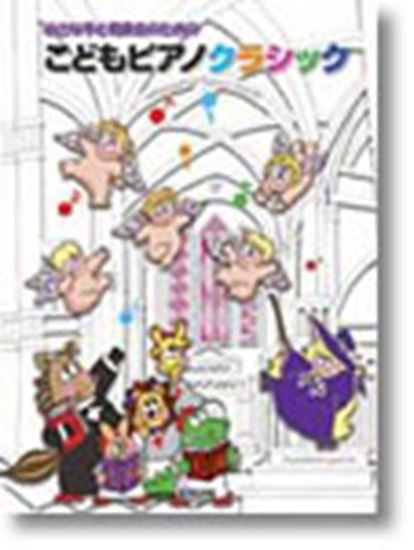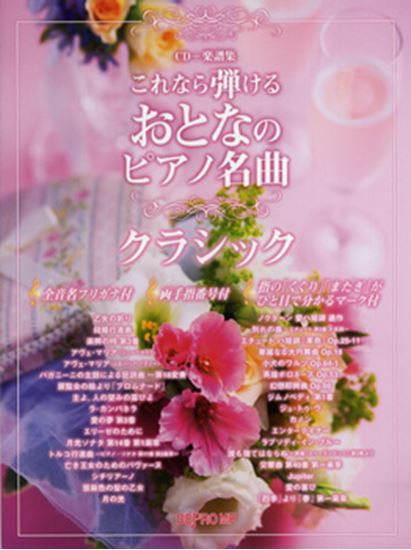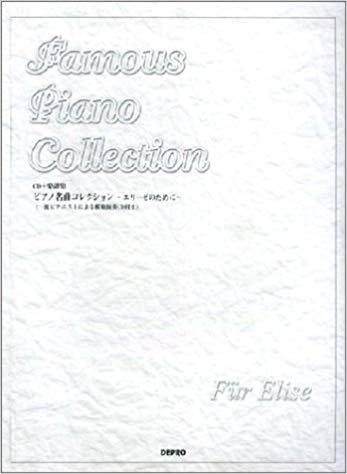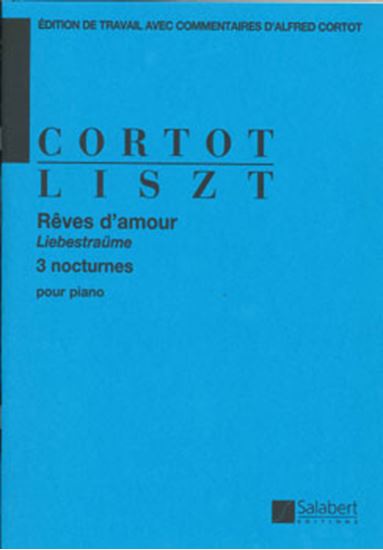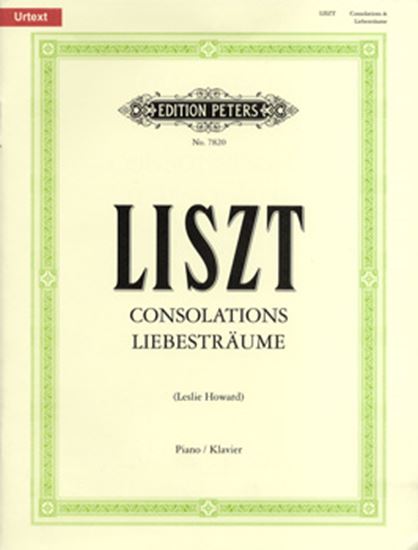Liszt, Franz : Liebestraume - 3 notturnos No.3 As-Dur S.541/3
Work Overview
Genre:pieces
Total Playing Time:4 min 30 sec
Copyright:Public Domain
Commentary (2)
Author : Ito, Moeko
Last Updated: January 14, 2019
[Open]
Author : Ito, Moeko
This commentary first provides information about the solo song, followed by information about its piano arrangement.
No. 3 in A-flat Major, "O lieb, so lang du lieben kannst!" (O Love, as long as you can love!)
This is one of the most popular short pieces among Liszt's works. It was composed around late 1843 as a solo song (S298) based on a poem by the German poet Hermann Ferdinand Freiligrath (1810-1876), with its first edition published in 1847. The second version was completed and published in 1850.
The poem, which begins with "O lieb, so lang du lieben kannst!" (O Love, as long as you can love!), sings not of romantic love but of human love. Its content is: "The time will come when you will lament before a grave. Therefore, love as long as you can love. If someone opens their heart to you, devote yourself to them and never cause them sorrow. And be careful how you speak; bad words quickly escape your lips. Even if you say, 'God, it was a misunderstanding!', that person will lament and depart."
The difference from the song version lies in the passage immediately preceding the recapitulation of the opening theme. In the song, this section corresponds to the line "Und huete deine Zunge wohl, ..." (And guard your tongue well, ...), taking the form of an alternating performance between the vocal and piano parts, creating a recitative-like section (a piece used in operas, oratorios, and cantatas to explain situations or individual feelings, a declamatory style). In the piano arrangement, this passage is absent; instead, a different melody is used to form the climax of the piece, adorned with rich ornamentation, leading into the recapitulation of the opening theme.
Author : Ooi, Kazurou
Last Updated: March 12, 2018
[Open]
Author : Ooi, Kazurou
This piece is so famous that it is almost too famous, but it is by no means an easy piece to play. Based on my experience in teaching, I will share common mistakes made by learners and tips for performance.
First, please recognize that this piece consists of four sections:
- Measures 1 to 26
- Measures 27 to 36
- Measures 37 to 60
- Measures 61 to 85
The peak point is the third section, which becomes the fastest in terms of tempo (sempre stringendo). The second section is set at a faster tempo than the first (Piu animato). And the first and fourth sections are set at the same tempo. Therefore, if you start the first section at too fast a tempo, you will have to play the later sections even faster, ultimately making it difficult for yourself. The third section is not one that can be played at a very fast tempo; it is the most technically demanding section in the piece. To play this safely, it is crucial not to start the first section at too fast a tempo.
Now, I will provide points of caution and performance tips for each section.
First Section
What I consistently have to tell all students playing this piece is about the difference in sound quality between the melodic line and the accompaniment. It is dolce but at the same time cantando. At all times, ensure that the melodic line is not buried by the accompaniment; play it clearly and expressively.
The first point of discussion is measure 3. The melodic line is C C D-flat C, isn't it? In this measure, there is only one bass note, F on the first beat. If you respect the bass and hold the pedal throughout this measure, the C on the first beat and the D-flat on the second beat will become muddy. Now, the issue boils down to whether this muddiness is bothersome or not. The perspective that a certain degree of muddiness is acceptable if it means not losing the bass line should also be respected. Some may not mind it at all, while others might strongly believe that the pedal must be changed here. The author uses half-pedal, but at times, it doesn't bother me at all.
Measure 6 is a resolution chord from the previous measure, so this measure must be played particularly p; however, look at the bass note on the downbeat of the second beat. A-flat is sounding in a low register, isn't it? This is interpreted as resonance (resonance = lingering sound). Play it ppp, almost inaudibly.
Measure 13 is the starting point where the tension begins to rise. From measures 13-14, build up to measures 15-16, reaching measure 16 with greater intensity. This is your first goal. However, the A minor chord in measure 17 has even higher tension than measure 16, so please consider measure 17 as one of the most tension-filled points in the first section, from measure 1 to 26. In measure 18, the tension is not as high as in measure 17; rather, the tension is momentarily lost, but from measure 19 to 22, the tension rises again. In measure 23, build tension towards the first note, F-flat, as your goal. Therefore, it is safe to consider measure 17 and the F-flat in measure 23 as the points of highest tension in the first section.
A common mistake is that upon reaching the F-flat in measure 23, learners lose their energy and play the subsequent E-flat, D-flat, C-flat, B, A-flat, G flatly and weakly. To explain measure 23 musically, I think it's good to imagine an "opera singer breaking down in tears and collapsing on stage." It is by no means a peaceful or weak section. Therefore, it is important to maintain intense emotion and avoid a sudden diminuendo.
Now, for the measures up to this point, I will provide special fingerings to make the melodic line more independent and easier to play. Please try them as needed.
- Measure 3, beat 2, melody D-flat → left hand
- Measure 5, beat 1, melody F → right hand
- Measure 10, beat 1, melody F → right hand
- Measure 11, beat 1, melody F → right hand
- Measure 13, beat 1, melody A-flat → right hand
- Measure 13, beat 2, melody A-flat and accompaniment F-flat → right hand, fingers 1 and 2
- Measure 15, beat 1, melody C → right hand
- Measure 15, beat 2, melody C and accompaniment A-flat → right hand, fingers 1 and 2
- Measure 16, beat 1, melody E and accompaniment G → right hand
- Measure 19, beat 1, melody C-sharp and accompaniment G-sharp → right hand
- Measure 20, beat 1, melody A-sharp and accompaniment F-double-sharp → right hand
- Measure 20, beat 2, melody D-flat and accompaniment A-flat → right hand
- Measure 21, similarly
- Measure 22, beat 1, similarly
From measure 24, there is a cadenza that enters a different world. Depress the soft pedal, and play with the utmost softness, creating a very blurred, indistinct sound quality. And a common misunderstanding concerns the speed. Seeing the small notes often leads to the compulsion to play fast, doesn't it? There is absolutely no need to play fast here. Playing it extremely slowly will make it heavy, but please play gently within a technically comfortable range. Play as if entering a dream world, avoiding an agitato-like cadenza.
Second Section
Measure 27, the theme begins in B major. Here, the indication is piu animato con passione. However, be careful not to play too fast. The goal is measure 36. Gradually build a crescendo towards this point.
Third Section
Upon entering measure 37, it is marked sempre stringendo. However, even here, avoid playing too fast. From measure 41 onwards, you cannot play well unless you maintain a reasonably safe tempo. Here, I will explain what happens to learners who play too fast from measure 37 onwards, specifically at measure 41. There are two cases:
- One case is when, after playing the octave G-sharp (right hand) and E (left hand) on the downbeats of the first and second beats of measure 41, the remaining five eighth notes become rushed. Although the first beat is played, the melody and bass on the second beat jump again. At that point, too much time is consumed, and this excess time is compensated for by the five eighth notes, resulting in the eighth notes being played unnecessarily fast and rushed.
- The second case is when the eighth notes are played accurately, but the melodic notes are missed.
Neither case is good; in short, do not play too fast from measure 37. However, even if you are careful, measure 41 remains a very difficult passage. You must practice the jumps here specifically. Also, since measure 41 is at the beginning of the section, refrain from fortissimo and keep it around mezzo piano. This is because the goal is to build up considerably to measure 50, then further to measure 55, and even further to measure 59.
An unnatural thing that can happen upon reaching measure 60 is that despite measure 59 being so loud, some learners play measure 60 at pp. Measure 60 starts at fortissimo and gradually diminuendos. Do not suddenly drop the volume. Human emotions cannot be changed so easily or instantaneously.
And measure 60 is truly difficult. If mistakes are to occur, this measure is a critical point. In many cases, the left hand lags, resulting in misalignment or disruption of the flow. The left hand here must be practiced at fortissimo. Pay particular attention to units involving the fourth finger of the left hand.
Fourth Section
Measure 61, return to Tempo I. In this section, assume there are four voices. One is the melodic line, another is the bass, another is the arpeggiated voice, and the last is the paired chords. These voices aim for independence. Therefore, play them with different sound qualities and consider the balance.
The melodic line is what must be brought out the most, so play this line broadly and clearly, as if singing. Next is the bass. And what you should play at pp is the arpeggiated accompaniment figure. And the paired chords should be played at ppp, as if the sound of bells or chimes is heard from a distance. Playing these paired chords at forte truly makes them vulgar.
Measures 77-80 are a quiet, unaccompanied section, but the imagination here is free. It can be likened to a music box.
What many learners must consider are measures 81-83. It is written in five voices, isn't it? Of course, the melodic line is at the very top. Ensure this line is clearly audible. Look at measure 82. The F immediately below the melodic line resolves to E-flat. In the bass clef, the A-flat on the first beat resolves to the next G, so do not emphasize the second beat.
And the melodic line from measure 83, in the treble clef, with stems pointing down, becomes C B C E-flat D-flat C C. This makes sense. Therefore, when playing measure 85, the C in the lower voice of the right hand becomes the melodic line, which should be brought out the most, while the topmost A-flat is played at pp.
Arrangements & Related Works(5)
Todoroki, Chihiro: きらきらピアノ こどものピアノ名曲集3 愛の夢 第3番(リスト)
Total Performance Time: 0 min 45 sec
PTNA & Partner Channel Videos(16items) View More
Sheet MusicView More
Scores List (124)

(株)ドレミ楽譜出版社

(株)全音楽譜出版社

KMP(ケイ・エム・ピー) ケイエムピー

(株)全音楽譜出版社

(株)ヤマハミュージックエンタテインメントホールディングス

(株)全音楽譜出版社

(株)全音楽譜出版社

(株)音楽之友社

KMP(ケイ・エム・ピー) ケイエムピー

KMP(ケイ・エム・ピー) ケイエムピー

ミュージックランド

ミュージックランド

ミュージックランド

ミュージックランド

(株)ドレミ楽譜出版社

(株)リットーミュージック

KMP(ケイ・エム・ピー) ケイエムピー

ミュージックランド

ミュージックランド

(株)シンコーミュージックエンタテイメント

(株)シンコーミュージックエンタテイメント

(株)シンコーミュージックエンタテイメント

(株)シンコーミュージックエンタテイメント

(株)リットーミュージック

(株)シンコーミュージックエンタテイメント

(株)ヤマハミュージックエンタテインメントホールディングス

(株)シンコーミュージックエンタテイメント

ミュージックランド

KMP(ケイ・エム・ピー) ケイエムピー

(株)全音楽譜出版社

ミュージックランド

(株)ドレミ楽譜出版社

(株)シンコーミュージックエンタテイメント

ミュージックランド

(株)シンコーミュージックエンタテイメント

(株)リットーミュージック

ミュージックランド

(株)ドレミ楽譜出版社

カワイ出版

(株)ヤマハミュージックエンタテインメントホールディングス

ハンナ(ショパン)

ミュージックランド

ミュージックランド

KMP(ケイ・エム・ピー) ケイエムピー

(株)ヤマハミュージックメディア

(株)シンコーミュージックエンタテイメント

(株)ドレミ楽譜出版社

KMP(ケイ・エム・ピー) ケイエムピー

(株)ヤマハミュージックエンタテインメントホールディングス

(株)シンコーミュージックエンタテイメント

KMP(ケイ・エム・ピー) ケイエムピー

(株)シンコーミュージックエンタテイメント

ハンナ(ショパン)

ハンナ(ショパン)

ハンナ(ショパン)

(株)全音楽譜出版社

(株)シンコーミュージックエンタテイメント

(株)シンコーミュージックエンタテイメント

KMP(ケイ・エム・ピー) ケイエムピー

KMP(ケイ・エム・ピー) ケイエムピー

ハンナ(ショパン)

ハンナ(ショパン)

(株)ヤマハミュージックエンタテインメントホールディングス

(株)シンコーミュージックエンタテイメント

(株)ヤマハミュージックエンタテインメントホールディングス

KMP(ケイ・エム・ピー) ケイエムピー

(株)全音楽譜出版社

(株)ドレミ楽譜出版社

(株)ドレミ楽譜出版社

KMP(ケイ・エム・ピー) ケイエムピー

(株)シンコーミュージックエンタテイメント

(株)ヤマハミュージックエンタテインメントホールディングス

ミュージックランド

(株)シンコーミュージックエンタテイメント

(株)ヤマハミュージックエンタテインメントホールディングス

(株)ドレミ楽譜出版社

ミュージックランド

(株)ドレミ楽譜出版社

ミュージックランド

(株)シンコーミュージックエンタテイメント

(株)シンコーミュージックエンタテイメント

(株)シンコーミュージックエンタテイメント

ミュージックランド

(株)タイムリーミュージック

(株)全音楽譜出版社

ミュージックランド

(株)全音楽譜出版社

(株)全音楽譜出版社

KMP(ケイ・エム・ピー) ケイエムピー

(株)シンコーミュージックエンタテイメント

KMP(ケイ・エム・ピー) ケイエムピー

(株)シンコーミュージックエンタテイメント

(株)シンコーミュージックエンタテイメント

(株)シンコーミュージックエンタテイメント

ミュージックランド

(株)シンコーミュージックエンタテイメント

KMP(ケイ・エム・ピー) ケイエムピー

(株)シンコーミュージックエンタテイメント

(株)シンコーミュージックエンタテイメント

(株)自由現代社

(株)ヤマハミュージックエンタテインメントホールディングス

(有)中央アート出版社

ミュージックランド

ハンナ(ショパン)

ヘンレー

ショット社/ドイツ

ヘンレ社(ヤマハ)

ムジカ・ブダペスト社

(株)オンキョウパブリッシュ〇

(株)ヤマハミュージックエンタテインメントホールディングス

(株)ヤマハミュージックエンタテインメントホールディングス

(株)音楽之友社

Musikverlag Doblinger

Musikverlag Doblinger

ミュッセ

(株)ヤマハミュージックエンタテインメントホールディングス



















